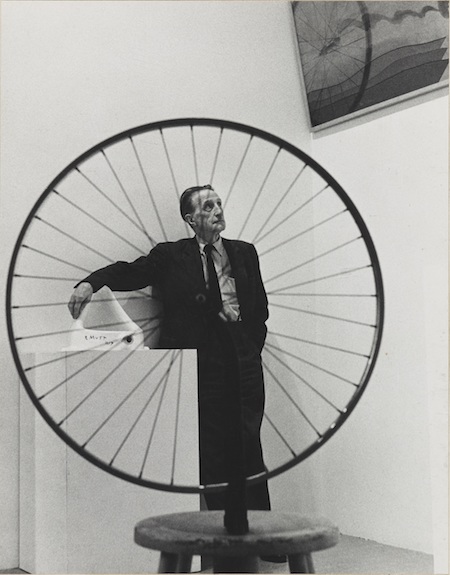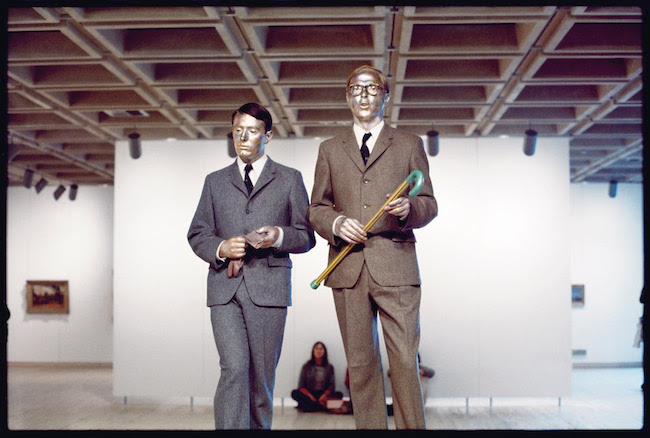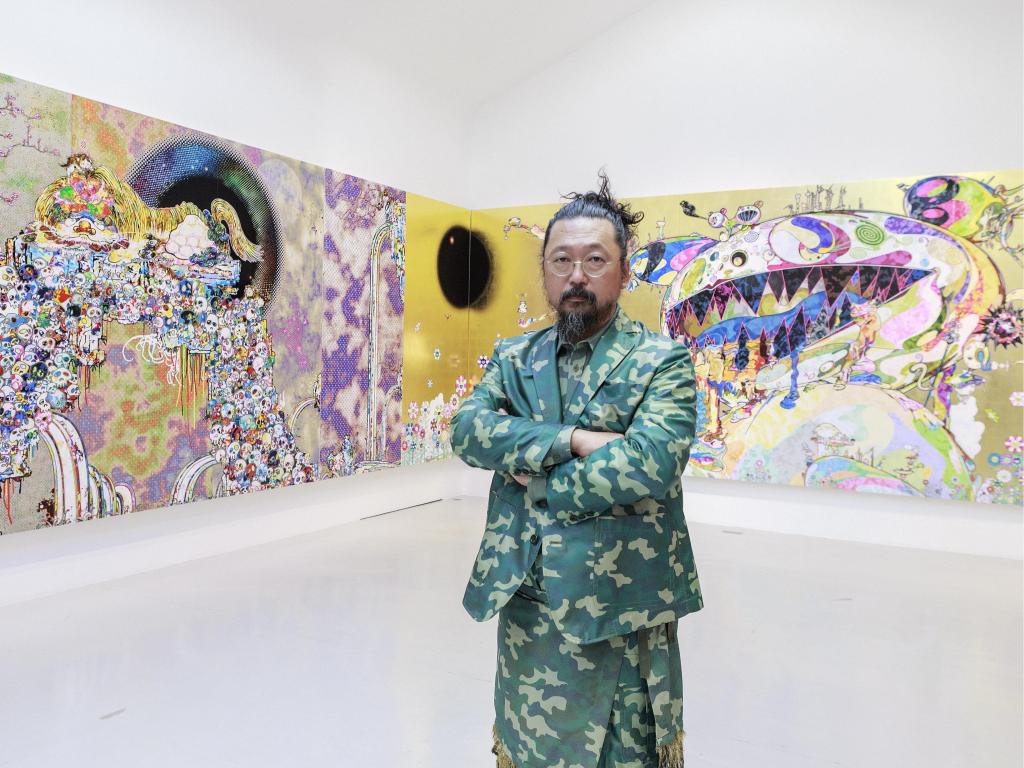Takashi Murakami Photo © Claire Dorn, courtesy of Murakami Studio
Consider this: a rare chance to encounter 5000 years of Chinese art history from one of the world’s finest collections; the most significant exhibition in the Asia-Pacific region of Dada icon Marcel Duchamp: the freshest take on new Australian art with The National, to crowd-driving prizes that broker careers with the Archibald, Wynne and Sulman; a look at how Australia became an engaged art audience through the public art projects of Kaldor, and to close the year Japanese icons stretching from Katsushika Hokusai to Takashi Murakami.
What does that say about an institution – its reach, its balance of programming, its vision as it grows into a larger institution? Art Gallery of NSW (AGNSW) Deputy Director and Director of Collections Maud Page describes the Gallery’s 2019 program as signalling the Gallery’s future direction.
Page told ArtsHub: ‘As we expand and transform our art museum with the Sydney Modern Project, we’re experimenting with different exhibition models that have the fluidity to reach different audiences but are very much based on the strength of our collection.
‘Our Sydney International Art Series exhibition, Japan supernatural, opening in November is a prime example and the entire Gallery is so enthusiastically involved with its creation. Equally, the Kaldor Public Art Projects 50 year celebration marks a gift and accompanying idea that was a turning point for our Gallery.’
She continued: ‘Heaven and earth in Chinese art: treasures from the National Palace Museum, Taipei continues our engagement with historical Chinese art since 1890 when the Gallery acquired the first works. The Essential Duchamp shines alongside our unique conceptual art collection and The National is our commitment to artists working now, which is what the Gallery has been doing ever since its inception.’
It is as though the AGNSW has taken its key pillars – its Asian collections, its international programming, its commitment to living Australian artists – and switched that engagement into high voltage this year, the same year that it breaks ground on the new Sydney Modern Project.
The gallery has created a program for 2019 that gives people the opportunity to engage with the topics of our times, and reflect upon this context when considering the past.
AGNSW Director, Dr Michael Brand said there has been a conscious attempt to better connect with our times and the gallery’s audiences.
‘In an often divided and intolerant world, the art museum must be a place of dialogue, nuance, complexity, ambiguity, discovery, surprise, curiosity and wonder. It must also be a place of open debate, impassioned opinion, and thoughtful reflection,’ Brand said.
Page noted: ‘I find the breadth of our exhibition program exhilarating and it’s crucial to mention here the depth and breadth of our dynamic public programming that runs hand-in-glove with the exhibition program.’
From international coups to home-grown blockbusters
While the gallery opened Heaven & Earth in Chinese Art this week – the first exhibition from the National Palace Museum in Taipei to travel to the Southern Hemisphere – it is another coup later in the year, The essential Duchamp, that promises to live up to the “blockbuster” name.
Opening late April, The essential Duchamp features 125 works and related documentary materials spanning the noted Dadaist’s six-decade career, including art history’s signature masterpieces Nude Descending a Staircase (No. 2) (1912) and Fountain 1950 (replica of 1917 original).

Marvin Lazarus, Duchamp at Museum of Modern Art’s Art of Assemblage Exhibition (Standing next to urinal and behind bicycle wheel), 1961. Gelatin silver print, Philadelphia Museum of Art. Gift of Jacqueline, Paul and Peter Matisse in memory of their mother Alexina Duchamp, © Marcel Duchamp/ADAGP. Licensed by Copyright Agency
Nicholas Chambers, Senior Curator, Modern and Contemporary International Art said that the only other in-depth exhibition of Duchamp’s work in Australia took place in 1967-68, when the Mary Sisler collection of 78 works toured Australian state galleries.
‘It was a show that had a profound impact on contemporary artists at the time,’ Chambers said. ‘The present exhibition is around twice the size and it draws from the incredible Arensberg collection at the Philadelphia Museum of Art – a collection that Duchamp himself helped assemble and which includes iconic works that have never before been seen in Australia.’
He continued: ‘Duchamp was one of the great disrupters of 20th century art. And, unlike other members of the avant-garde, his approach was dogma free! His works are witty, restless and enigmatic; they keep us on our toes. In 1917 he submitted a urinal, titled Fountain, to an exhibition in New York. More than a century later we’re still discussing its ramifications.’
Putting Australia in context of global conversations has always been at the heart of Kaldor Public Art Projects (KPAP). Launched in 1969 with Christo and Jeanne-Claude’s ground-breaking Wrapped Coast at Sydney’s Little Bay, Kaldor Public Art Projects has since presented over 30 public art projects across Australia, and changed the way we engage with contemporary art as a nation.
In September 2019, the Gallery will launch Kaldor Public Art Projects: half a century in the public eye, an exhibition which honours and surveys one of the Australia’s most ambitious public art initiatives.
Chambers said: ‘Michael Landy is a London-based artist who produced a project with Kaldor Public Art Projects in 2011. Michael is collaborating with the AGNSW and KPAP on the exhibition – he’s been deep in the project archives and is bringing an artist’s perspective to bear on the extraordinary wealth of material found there.’

Kaldor Public Art Project 3: Gilbert & George, The singing sculpture, Art Gallery of New South Wales, Sydney, 16 – 21 August 1973, Photo: AGNSW
Collaboration is centre stage in the 2019 exhibition program line up, as the Gallery not only partners with international galleries and Kaldor Public Art Projects, but joins Carriageworks and the Museum of Contemporary Art Australia to present The National 2019: new Australian art in March.
AGNSW is proud that it will be showcasing new and commissioned work by 24 contemporary Australian artists, 60% of whom are women.
And wrapping up the year in November, over 200 wildly imaginative works by Japanese artists past and present – from historical master Katsushika Hokusai to superstar Takashi Murakami – will travel to Sydney for Japan supernatural.
Melanie Eastburn, Senior Curator, Asian Art, International Art, told ArtsHub: ‘It’s exciting to be putting together an exhibition of works of art that span from the 1700s to now and present stories and characters from the supernatural realm – a world that is not usually visible.’
Centred on a monumental installation of painting and sculpture by Takashi Murakami, the exhibition features some of the greatest Japanese artists of the past including Katsushika Hokusai, Utagawa Kuniyoshi, Tsukioka Yoshitoshi and Kawanabe Kyosai, alongside contemporary artists Chiho Aoshima and Miwa Yanagi who update the tradition for our times.
Eastburn continued: ‘Some of the first objects to come into the Gallery’s collection were Japanese ceramics given to the Gallery after the 1879 Sydney International Exhibition and which were contemporary at the time.
‘Although Japan supernatural is something completely new for us, a number of the key works in the exhibition are from the collection. One of these is Night procession of the hundred demons, an incredible 19th-century, six metre long handscroll showing supernatural beings and household objects that have come to life marauding through the streets of Kyoto.’
AGNSW’s 2019 program is larger than life. It is dynamic, nuanced and forward-looking in the way it engages with audiences and its collection.
Put these dates in your diary now:
Heaven and earth in Chinese art: treasures from the National Palace Museum, Taipei | 2 February – 5 May 2019 | TICKETED
The essential Duchamp | 27 April – 11 August 2019 | TICKETED
The National 2019: new Australian art | 29 March – 21 July 2019
Archibald, Wynne and Sulman Prizes 2019 | 11 May – 8 September 2019 | TICKETED
Kaldor Public Art Projects: half a century in the public eye | 7 September 2019 – 16 February 2020
Japan supernatural I November 2019 – March 2020 | TICKETED





